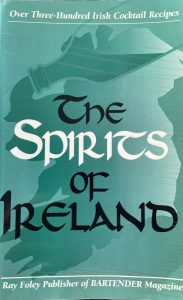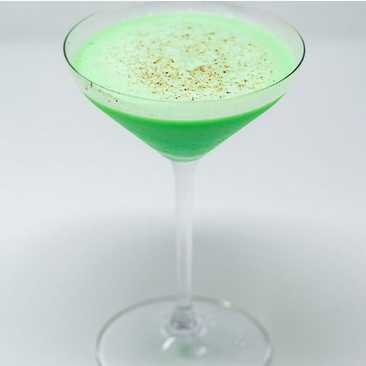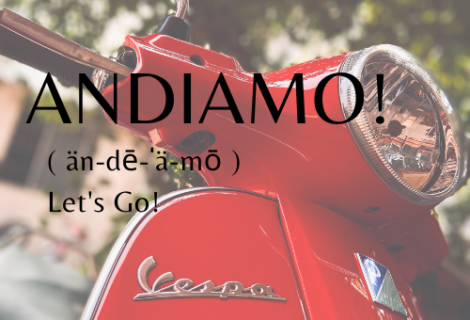Why Do We Celebrate (And Drink) On St. Patrick’s Day?
Livio Lauro
It’s no secret that beer and spirits are usually associated with St. Patrick’s Day. For some, this holiday might just be another example of lively people taking advantage of a celebration, there is a solid reason why alcohol has long been a part of the holiday that is now celebrated worldwide. So, lets take a dive into this Holiday and offer the vintage, non-customary Irish cocktails to consider this month and beyond.
Who is Saint Patrick?
Saint Patrick is the most popular of all of Ireland’s patron saints thanks to his special day that has become synonym to fun celebrations. There is something special about enjoying Corned Beef, Sauteed Cabbage and Shepherd’s pie, tipping a pint of Irish Stout, and listening to Irish music!
St. Patrick was born in Roman Great Britain in the late 4th century. Because we are talking about a long time ago, some of the details of his life are a bit unclear and the story varies depending on the source.
He was kidnapped from his home at the age of 16 and forced into slavery in Ireland, where he looked after animals. Six years later, Saint Patrick was able to escape and return to his home and family in Great Britain, where he decided to become a priest, and then eventually a bishop.
While he was back in Great Britain, Saint Patrick claimed to have had a vision of the people of Ireland calling out to him in one unified voice to return to Ireland and walk among them. At this time, the Irish people worshiped many different Gods and supreme beings. Inspired by his vision, Saint Patrick returned to Ireland to bring Christianity to the people.
The Tradition of Drinking
St. Patrick’s Day first started to honor Saint Patrick on the anniversary of his death. The Christian people held a great feast for which Lenten food and alcohol restrictions were temporarily removed, therefore drinking has become synonymous with the holiday. Today, that tradition remains, as some Catholic people choose to set aside Lent restrictions just for St. Patrick’s Day.
As the years passed, St. Patrick’s Day became less about the man and more about general Irish traditions, culture, and history. The first recorded St. Patrick’s Day parade in New York City was held in 1762, and thanks to the thousands of Irish people who had emigrated to America to escape the potato famine in the 1840’s the parades became even more massive. Since then, the American people have embraced the holiday, continuing to add their own takes on its ever-evolving traditions.
Why Participants Wear Green
The color Green associated with this day stems from another iconic St. Patrick’s Day symbol—the shamrock. According to legend, Saint Patrick used three-leaf clovers as a teaching tool to illustrate Christianity’s Holy Trinity of the Father, the Son and the Holy Spirit. Celebrators would wear shamrocks on their clothing in honor of Saint Patrick, and eventually that tradition evolved into wearing green as well.
I believe that this year’s St. Patrick’s Day is even more special than the past as the dangers of the COVID-19 pandemic are rapidly reducing. The loosening up of confined enjoyment, the arrival of spring break, and the weather warming up makes St. Patrick’s an opportunity to spend time having some fun with the people in your life you care about most and make some memories that you won’t forget. So, let me give three ways to do that with the aid of a 1998 Cocktail recipe book written by Ray Foley, the Publisher of Bartender Magazine and author of dozens of drinks-related books:
Skibbereen Tonic
2 oz. (60ml) Blended Irish Whiskey
4 oz. (120ml) Premium Tonic water
Lemon peel twist
Method (Build Over Ice): Pour all ingredients over ice directly in a Highball glass. Stir gently to mix.
Garnish: Lemon peel twist
Alcohol Bite: Medium
Characteristic: Refreshing / Thirst Quencher
Note: Named for the seaside town in County Cork, this is simply a gin and tonic made with whiskey and the combination works nicely.
Serpent’s Tooth
1 oz. (30ml) Blended Irish Whiskey
1.25 oz. (37.5ml) Sweet Vermouth
.25 oz. (7.5ml) Kümmel
.25 oz. (7.5ml) Fresh lemon juice
2 dashes Angostura bitters
Method (Shake and Strain): Add all the above ingredients with ice into a Shaker. Shake for roughly 10 seconds and strain into a chilled Cocktail Glass
Garnish: Lemon Peel
Alcohol Bite: Medium Plus
Characteristic: Boozy / Sipper
Note: The presumed provenance of this drink’s name is Shakespeare’s tragedy “King Lear”. This invigorating blend of whiskey, vermouth, lemon juice, kümmel (a caraway-laced liqueur) and bitters is delicious.
Maidens Prayer
1.5 oz. (45ml) Drumsanbo Irish Gin
.75 oz (22.5ml) Cointreau
.5 oz (15ml) Fresh lemon juice
.5 oz (15ml) Fresh orange juice
Method (Shake and Strain): Add all the above ingredients with ice into a Shaker. Shake for roughly 10 seconds and strain into a chilled Cocktail Glass
Garnish: Lemon Peel
Alcohol Bite: None
Characteristic: Juice / Sipper
Note: This cocktail first appeared in the Savoy Cocktail book from the 1930’s. The original recipe was quite sweet, so a few changes have been made to make it more balanced. An optional dash of bitters of your choice would make this drink even better.




